Chances are that you’ve heard the story of the tortoise and the hare before, and maybe know the moral of tortoise and hare by heart… but you likely only know ONE version of it.
In this classic Aesop folktale, the speedy, cocky hare challenges the slow-poke tortoise to a race, and the tortoise shockingly agrees.

The race begins!
Halfway through the competition, the hare becomes so overconfident at his giant lead that he takes a nap, dreaming of his glorious and easy victory.
When the hare awakes– oh horror of horrors!– he realizes that the perseverant tortoise has passed his napping self and has WON the race! What shame!
The moral of tortoise and hare? “Slow and steady wins the race,” grins the tortoise to the sobbing hare at the finish line.
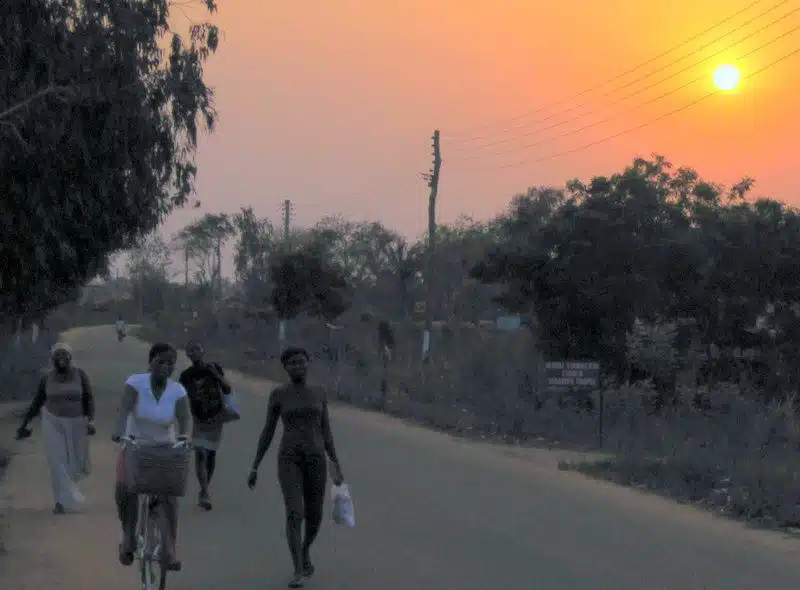
The U.S. Moral of Tortoise and Hare
And thus American children learn the value of individual hard work and never giving up in the pursuit of a personal goal from this tortoise and hare moral.
But wait– there is also a story called “The Tortoise and the Hare” in African folklore… but it is totally DIFFERENT from the Western version! Pause for a moment to guess what the difference might be between the Western and the African versions. Do you have your guess? All right– read on.
According to Professor Kwame Gyeke, author of the wonderful text, “African Cultural Values,” the African version of The Tortoise and the Hare goes something like this…
The speedy hare challenged the tortoise to a race: that part is the same. The cruel hare insulted the tortoise for days on end, and made it clear that the race winner would surely be Mr. Hare.
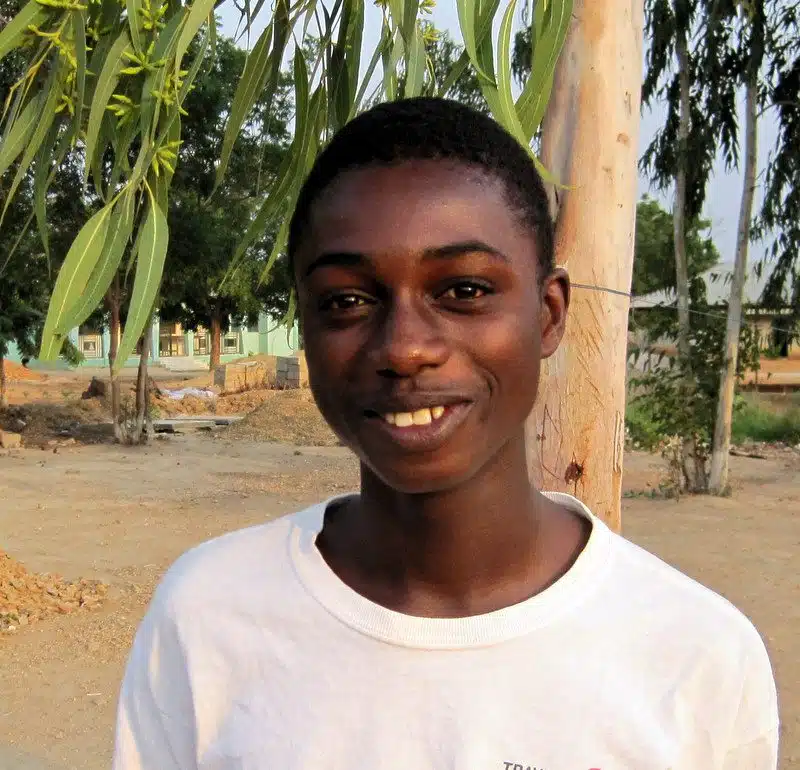
Here comes the difference in the story from the Western version, however: that night, the African tortoise gathered around him all of his tortoise friends and family and declared the following:
“This is a matter that affects not only myself but the honor of every tortoise. If I win, then the glory will go to our family as a whole. Will you all help me so that I can win?”
The tortoises let out a resounding “YES!” and a plan was hatched. All along the road for all the miles of the race, the members of the tortoise family hid themselves.
And the race began!
The hare shot off down the road in a cloud of dust and had covered forty yards before he turned back to gloat at the tortoise. But what was this?! There was no tortoise behind him! The hare turned back around and– GASP! — far ahead of him was the little tortoise, singing a jolly little song as he trotted forward! No! How could this be?!
The hare sped up and was about to overtake the tortoise, when he turned around again to check how far he’d come. When he turned back around again — NO! — the tortoise had gained fifty more yards and was far ahead!
This pattern was repeated for the entire race, and when the utterly exhausted hare finally threw himself across the finish line, he nearly vomited when he saw that the tortoise had arrived before him… and was already being crowned champion!
The triumphant tortoise gave the following speech to all of the overjoyed animals: “My victory was the triumph of unity and cooperation. We won because we all stuck together.”
“Why do you keep saying “we”?” asked the King who had arranged the race.
The tortoise responded, “Every member of my family and every one of my friends gave me their support so that we were able to win.”
Of course, in the end, everyone realized that the tortoise had won because (did you guess it?) his family members were hiding along the race route to impersonate him in the road ahead whenever the hare turned his back! Now, while this may seem like the triumph of deception over truth, the overall message is positive. Why? Let’s face it: the hare was an individualistic, overconfident jerk, while the tortoise was a wise, loving, community-collaborating fellow!
The African Moral of Tortoise and Hare
Ready for the African moral of tortoise and hare? As Professor Gyekye writes: “The point of this folktale is that when people cooperate and work together, they can overcome all kinds of obstacles. Together, they can achieve better goals.” (p. 44).
Why am I bringing up this furry story in its Western and African versions? Because the moment I read the African version, it reminded me of the beautiful ways in which international donors and volunteers have worked together with Youth Creating Change, Ghana, to create positive change in this lovely Volta Region community.
It reminded me of how a unified, cross-world commitment to the work of YCC is helping to surmount the obstacles of poverty, ignorance, and lack of opportunity.
An example? The fantastic academic Grand Quiz, which inspired two hundred Ghanaian children to read a plethora of high-quality donated books, and which served to bring much-needed educational resources into local classrooms, could not have been possible without the donations gathered through Bright Star Vision USA.
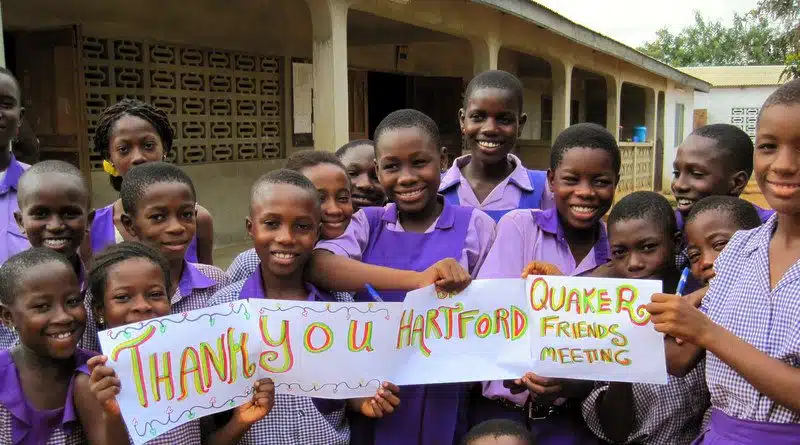
These donations came thanks to particularly generous contributions from the First Presbyterian Church of Hartford and the Hartford Quaker Friends Meeting, among other extremely kind donors.
As you gaze as these two “Thank You” photos, imagine a dozen bell-like Ghanaian voices singing: “We appreciate everything you have done for our community! THANK YOU!”
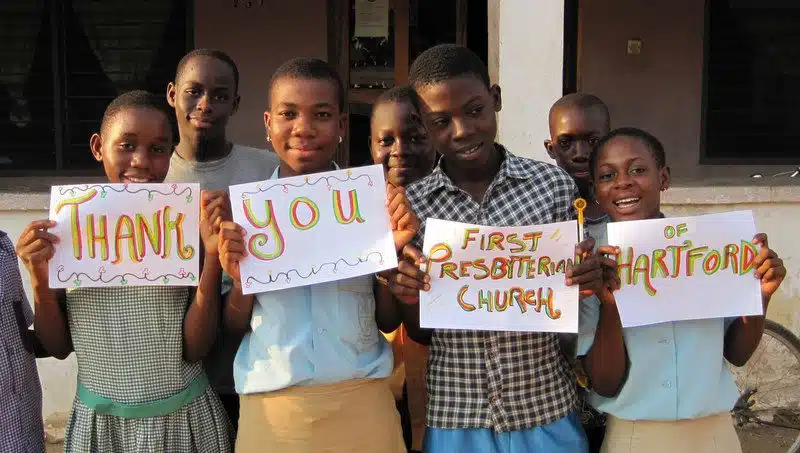
Bright Star Vision may be a secular organization, but because we are all part of one human family, BSV has been able to harness the talents and contributions of a wide and beautiful range of people. Wonderful!
In Western countries, as our version of “The Tortoise and the Hare” reveals, we are taught that we should work hard for ourselves alone. Oh, the glory of individual achievement! But let’s face it: we have much to learn from the African tortoise about teamwork and about contributing to a wider community to overcome challenges together.
Another example: look at this photo below of the fantastic YCC library! Without the generous donations from Bright Star Vision USA and other angels, Sogakope would not have a library at all, nor would it have its small computer lab for students to learn basic technology skills, including– for the first time ever, using the single working internet connection– how to tap into the opportunities available on the World Wide Web.
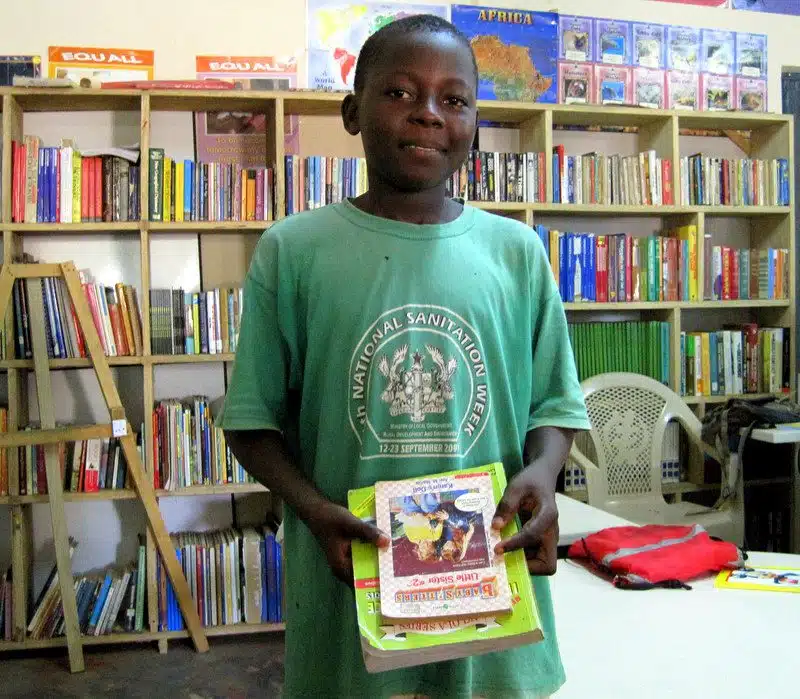
Without that slow but steady internet connection, these Ghanaian students would never have been able to launch the wonderful penpal exchange program with their peers in America and Canada, which is making us all so happy and teaching us so much.
By coming together as a human community across the various oceans, so very much that was previously impossible has been made attainable here in Ghana’s Volta Region.
So now, human family, let us gather together some more, just as the tortoise family gathered together to beat that cocky hare. Poverty, ignorance, and lack of opportunity can be intimidating competitors in this endless race, but if we work together as a team, like the African moral of tortoise and hare, we will overtake our evil rivals and cross the finish line to a better future, triumphant!
Are you feeling inspired and communal as you read this? Tomorrow’s post will feature a delicious menu of ways that you can join this family of mutual aid, yourself… including an invitation to a really fun party!

The author, Lillie Marshall, is a 6-foot-tall National Board Certified Teacher of English, fitness fan, and mother of two who has been a public school educator since 2003. She launched Around the World “L” Travel and Life Blog in 2009, and over 4.2 million readers have now visited this site. Lillie also runs TeachingTraveling.com and DrawingsOf.com. Subscribe to her monthly newsletter, and follow @WorldLillie on social media!

Frank Mueller
Tuesday 13th of December 2016
The African version is remarkably similar to a German folk tale - the hare and the hedgehog. This sory has been told in Germany for a long time, and was first written down in the early 1800s in Low German. Later the Brothers Grimm included the story in their famous collection of folk tales together with Little Red Riding Hood, Cinderella, Snow White, and so on. I have known it since I was a little kid. The hare is a noble landowner, cocky and cruel. The hedgehog is a common farmer tending his turnips. The hare mocks the crooked legs of the hedgehog, who in turn challenges him to a race. When the race is conducted, the hedgehog runs only a few steps. At the end of the furrow is hidden the wife of the hedgehog, and when the hare approaches triumphantly, she welcomes him with a jubilant „Ich bin schon da!“ (I am here already), which has become proverbial in German. The furious hare insists on 73 rematches, until after the 74th run he collapses and dies. The moral of the story is twofold: that one should never mock seemingly inferior people, and that it is important to marry a compatible partner. The whole story is a potent illustration of the German term "Bauernschläue", which describes the concept that poorly educated people can outsmart seemingly superior individuals by use of cunning, discretion, and far sighted planning. Intelligence is not the same as education.
Lillie
Tuesday 13th of December 2016
So interesting! Thank you for sharing this extra layer of understanding!
Fatuma
Tuesday 17th of November 2015
I think that both African version was really interesting. I liked how in all the stories the tortoise never gave up right away, but instead tried his hardest at first. Even when the he got made fun of.
Griffin L.S.
Tuesday 17th of November 2015
I think that the African version of the Tortoise and the Hare is better than the Western version because it teaches us that teamwork can help you accomplish anything! While one person might donate, it isn't going to do much, but if a whole group of people donate, it will have a much bigger impact.
Elliot G.
Monday 16th of November 2015
I had never known that there was a different story to "The Tortoise and The Hare" in Africa, which made learning about it all the more fascinating. Personally, I liked the African version of the folktale better, but I think they both teach valuable lessons. There's the lesson of teamwork, and the lesson of not being overconfident. I do wonder if there are other folktales from Africa that are different from those that are told here.
Diego B
Monday 16th of November 2015
I believe this connects to Greg Mortenson working together with villages and close friends to help accomplish what seemed impossible at first but became a reality of building schools for places that needed them in Pakistan and Afghanistan.